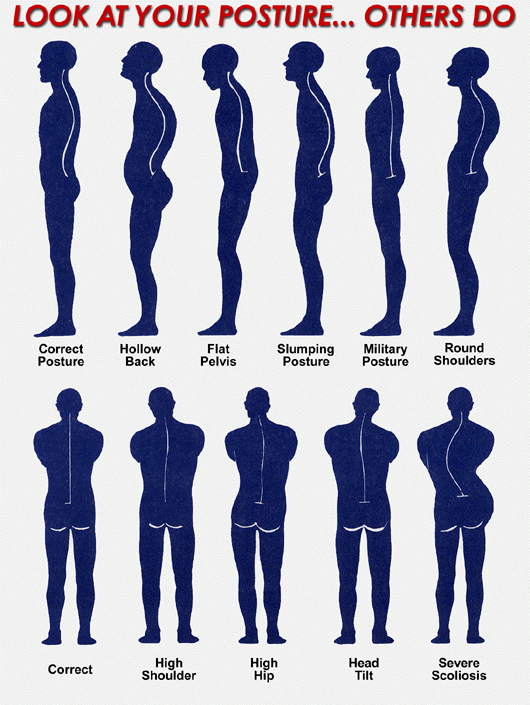Let me start off by telling you a little story about the birds and the bees…actually on second thought, lets just skip to birth! As infants, we are born as wee little C-shaped babies; think fetal position. This shape/position is the first posture we assume in life and we call it the ‘primary curve’ which forms a full-spine kyphosis. As we develop and start lifting our cute little baby heads, a ‘secondary curve’ forms in our neck (cervical spine); this time in the shape of a lordosis. Finally when we begin getting ourselves into trouble by moving around the house (via crawling and walking) a second ‘secondary (lordosis) curve’ develops in our low back (lumbar spine).
So let’s recap: now we have a lordotic curve in our neck and low back, while we have a kypotic curve in our mid back (thoracic spine) and we can walk! Having these curves in our spine gives us proper body posture to support all of our internal organs as well as angulate all of our muscles in the correct positions to give us the ability to walk. This process can be summed up as: Postural Development/Conditioning.
Now posture is an important thing as without it, we get injured. Think of the human musculoskeletal system (muscles and bones) as the greatest architectural creation to ever exist. Every curve, dent and hole in a bone (206 bones in the human body equates to a lot of different curves, dents and holes) has a specific purpose of existing due to our evolution and adaptation over millions of years. Every muscle, ligament and tendon is attached to one or more of these bones (in very specific locations) and has multiple blood and nerve supplies. It is very complicated! When you start to now consider that the process of movement originates in the brain (as hormonal and electrical impulses) and travels down the spinal cord, out the nerves of the spine and to the muscle, things become almost incomprehensible! All in all, it is the human posture that allows us to stand-up straight and walk.
The body can be thought of as a house, building or bridge. Something specifically and meticulously designed to stand the test of time and to protect what is inside. There is not one house, building or bridge that doesn’t eventually need to be upgraded or repaired (ie: replace the roof, add an energy efficient furnace, fill in a pothole etc.) because we use them so much. With use comes damage, it is inevitable! Now imagine if you could physically feel that damage…well, you can, that’s what your body goes through! Your posture is the house, building or bridge for your body (don’t you love it when an analogy comes together). Your posture protects what is important inside of you and it is your posture that takes the brunt of the wear and tears of the environment to your body.
The point? Posture is extremely important! The human body is designed to be most functional and work at its best when a correct posture/position is maintained (good form = good function). So what is a ‘good posture?’ This is where things get a little more complicated because posture is a dynamic concept, meaning it is always changing as we do different things. However, a general idea remains that if you promote and consciously have an intent to maintain the ideal posture (ie. the prototypical human form), which promotes and supports the natural curvature of the spine, you can use your bones and muscles in the ideal form/position they were created/designed to operate in; thus minimizing the risk of injury.
In closing, a wise man once said “chickity-check yo self, before you wreck yo self” which couldn’t be more true! That man, Confucius? Ghandi? No my friends, it was my man, Ice Cube. YEAH YEAH!
Written by Dr. Alim Kara BSc, DC

